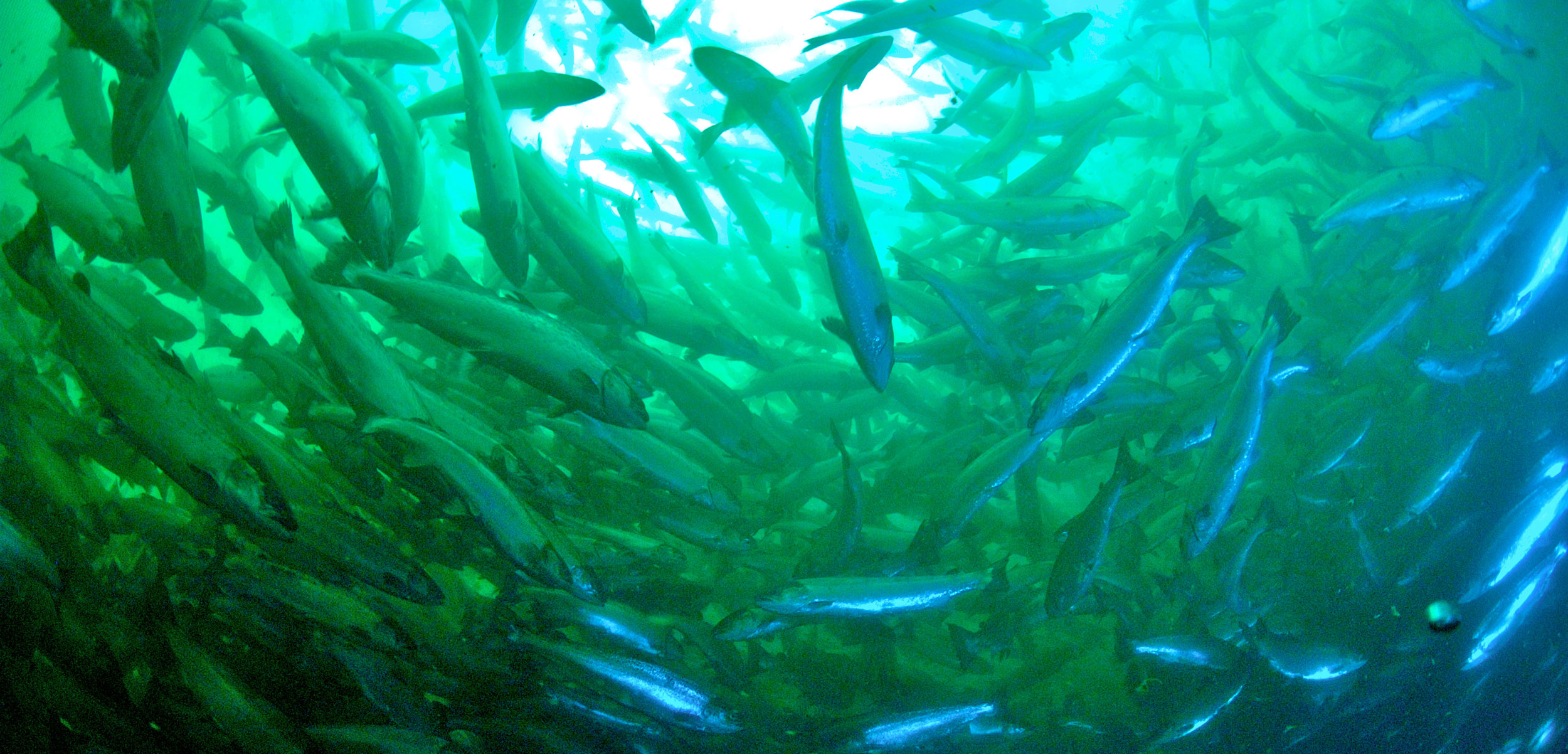Unmasking a Salmon Virus
The previously unknown cause of a common chinook salmon disease has turned out to be a familiar foe.
Article body copy
A common virus that plagues Atlantic salmon in fish farms around the world also causes disease in farmed Pacific chinook salmon, a new finding that reignites the debate about infectious disease migrating from farmed fish to wild fish.
For the past decade, one strain of Piscine orthoreovirus, PRV-1, has infected farmed Atlantic salmon on Canada’s West Coast at high levels—around 70 percent of the fish at most farms. Last year, scientists definitively linked PRV-1 to heart and skeletal muscle inflammation (HSMI) in the farmed fish. The disease causes inflammation that affects the fish’s ability to swim and feed. Kristi Miller-Saunders, a molecular biologist with Fisheries and Oceans Canada, has now found that PRV-1 also infects farmed chinook, though it causes different symptoms.
Miller-Saunders knew that a different strain of Piscine orthoreovirus, PRV-2, causes a disease in farmed Japanese coho salmon that appears much the same as the jaundice and anemia that afflicts farmed chinook salmon in British Columbia. That gave her the idea that PRV may be responsible for the chinook’s disease as well.
So, she and her colleagues used a sensitive molecular test that they had recently developed, along with thorough microscopic analysis, to track the spread of the virus in chinook tissue at every stage of the disease’s development. “We were able to … show the intimate relationship with PRV in chinook,” Miller-Saunders says.
But when Miller-Saunders and her team sequenced the genes of the virus that was making the chinook sick, they found something unexpected—it was PRV-1. Chinook and Atlantic salmon, when infected with the same strain of the virus, get different diseases.
That’s not unheard of, says Frederick Kibenge, an aquaculture virologist at the University of Prince Edward Island. “If one host is more used to the virus, it might respond differently,” he says.
That’s what Miller-Saunders thinks is happening—the chinook’s reaction to PRV-1 is extreme because the virus is new to the fish. “It could be that Atlantic salmon are the normal host, so the virus is more tolerated,” she says. “They have coevolved to coexist.”
As she tracked the disease’s progression in chinook and Atlantic salmon, she saw important differences. In both species, the virus first infects the red blood cells, where it replicates. Fish are symptom free until the viral load grows so high that the fish react—and this is when the effects diverge. In Atlantic salmon, PRV-1 trickles out of the red blood cells and infects the heart and muscles, causing inflammation. In chinook salmon, the blood cells burst, releasing the virus as well as the cells’ hemoglobin, which is toxic to the liver and kidneys.
In aquaculture, both HSMI in Atlantic salmon and jaundice and anemia in chinook are chronic infections that cause few deaths. Since farmed fish have time and space to recover, PRV is mainly an economic nuisance, causing the fish to grow more slowly. But in wild fish, even mild infections can be harmful, says Kibenge. “They have to forage for food, avoid predators, and migrate to spawn. Physical activities demand physical health,” he says.
Chronically diseased farmed Atlantic salmon could be a major source of infection for the wild fish that pass by, Miller-Saunders says. If a chronic infection slows down wild fish, they can be left behind by their school and become easy prey. “They are dead fish swimming as soon as they are physically compromised,” she says.
Miller-Saunders and her team’s next goal is to determine how often that kind of transmission might occur. But it’s difficult to spot the disease in wild fish because those that are infected will likely die and be eaten before they can be studied. Now, however, the team’s new molecular test can identify PRV-1 even in healthy wild fish before symptoms surface. “Now we know what to look for in wild fish,” she says.

